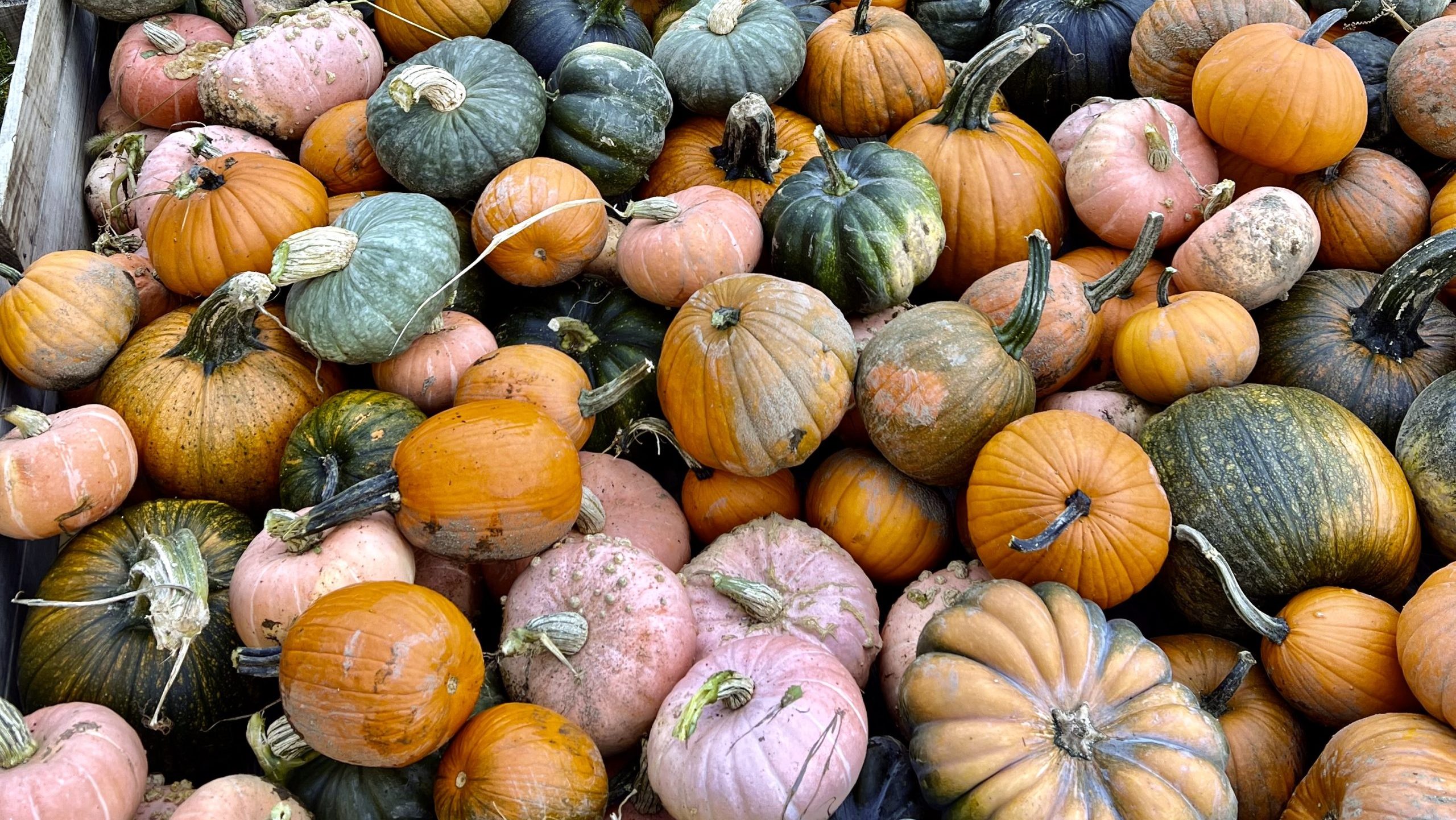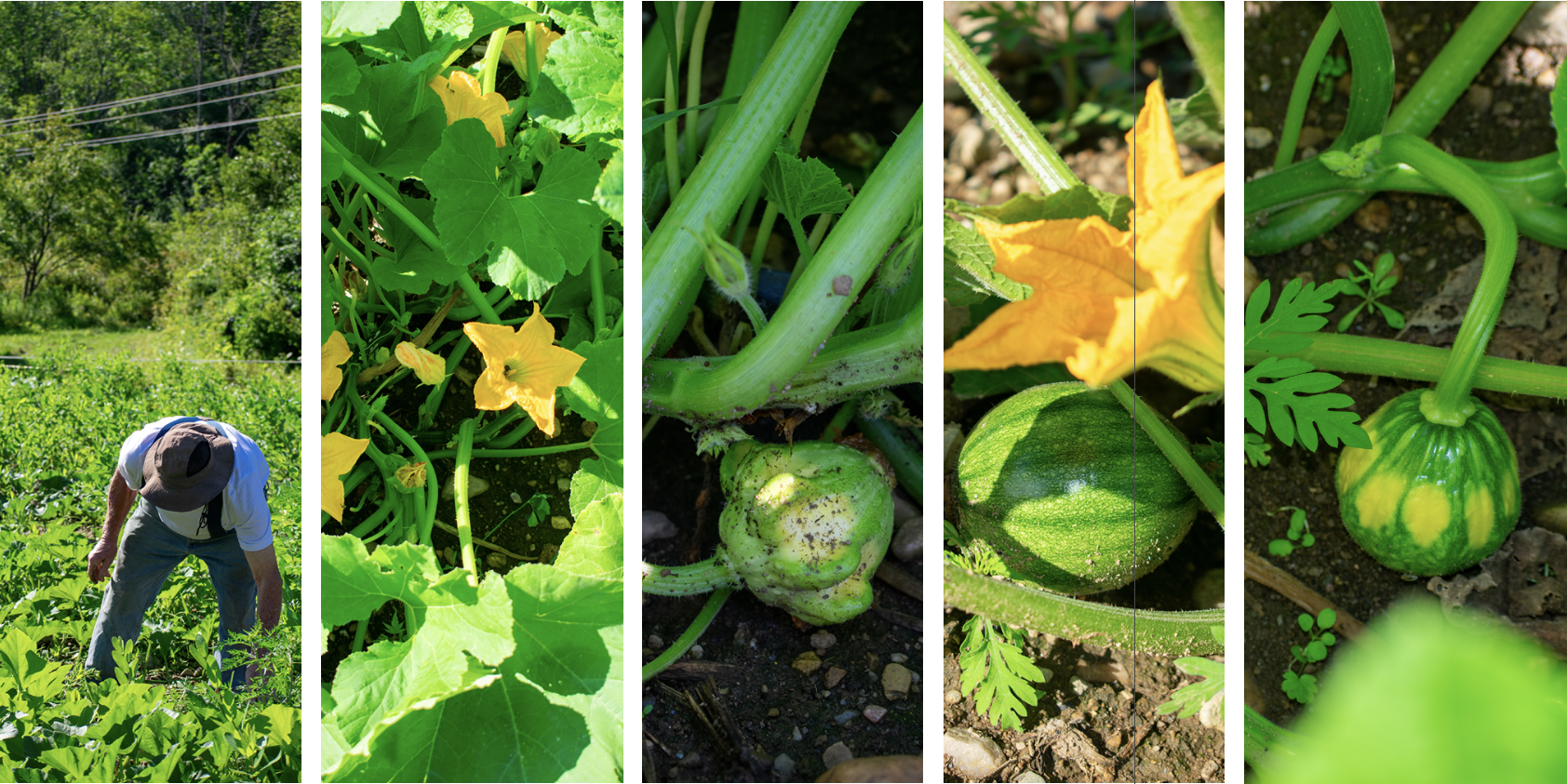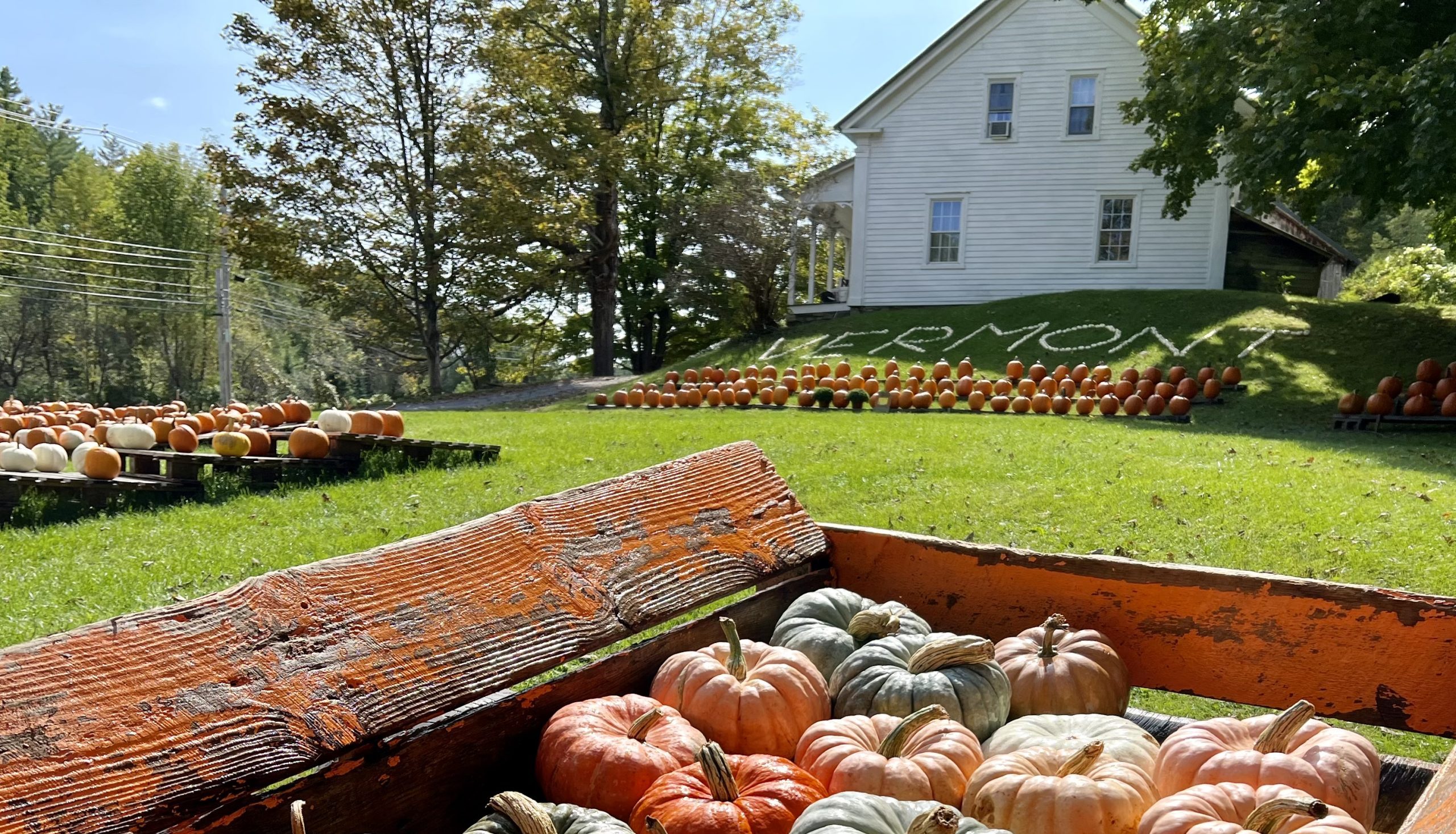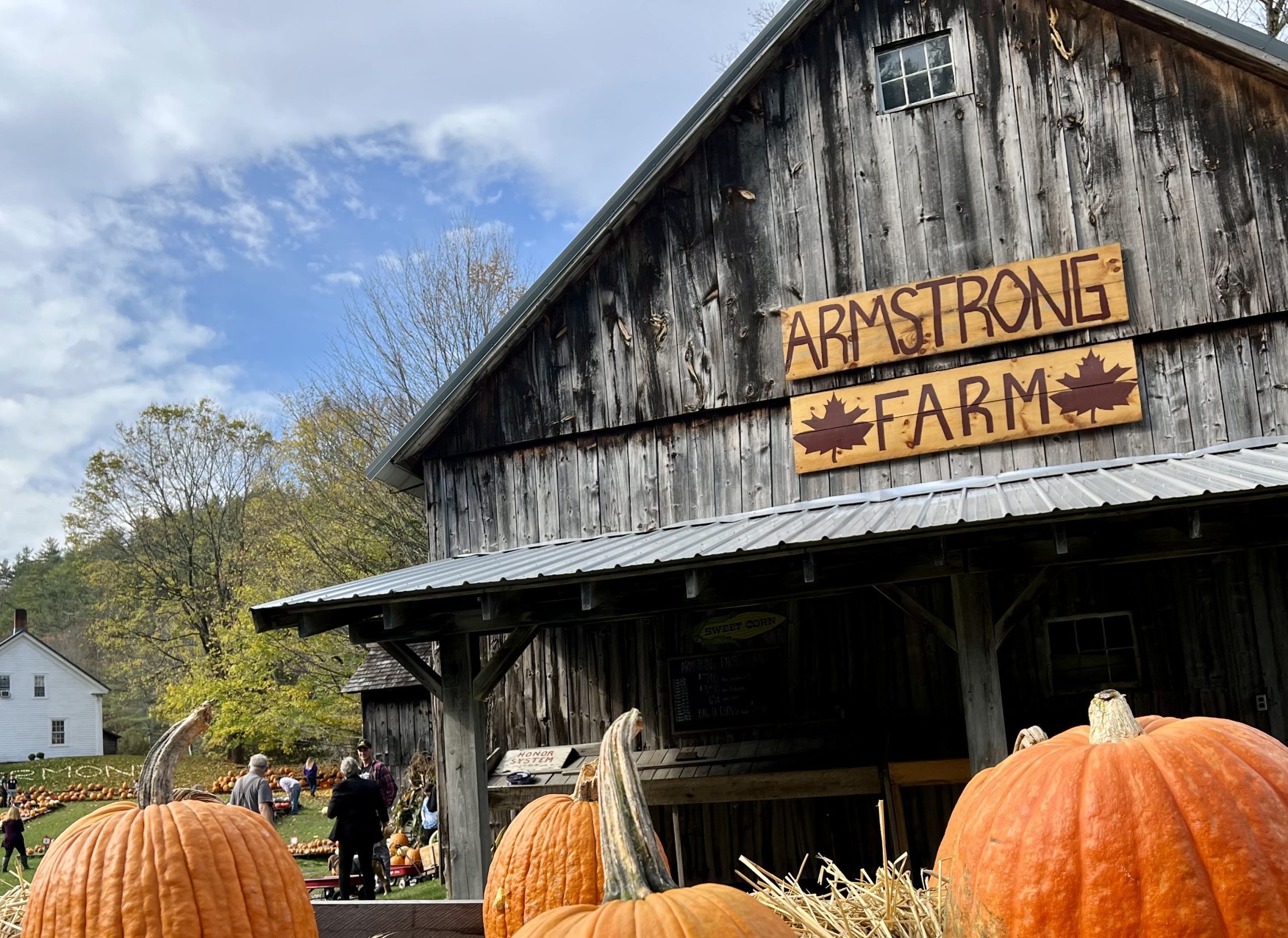STORY BY BENJAMIN LERNER
PHOTOGRAPHY CRAIG LIGHT & COURTESY ARMSTRONG FARM
The owners of the beloved Armstrong Farm farmstand in Pownal share how their colorful and distinctive gourds are grown.
 On Route 7, just south of Bennington in Pownal, the Armstrong Farm farmstand holds a special place in the hearts of many visitors and lifelong Vermonters—especially during the height of the Fall season. The vibrant foliage on the surrounding trees creates a breathtaking backdrop behind the on-site shop, which is well-stocked with maple syrup, maple cream, and other Vermont-made products. A gently-sloping hillside stands adjacent, lined with rows of locally-grown gourds and pumpkins from their nearby farm in North Bennington. At the top of the hill, gourds and pumpkins are arranged to spell out “VERMONT” in uppercase letters, providing an unforgettable Fall photo opportunity for vacationers and local residents alike.
On Route 7, just south of Bennington in Pownal, the Armstrong Farm farmstand holds a special place in the hearts of many visitors and lifelong Vermonters—especially during the height of the Fall season. The vibrant foliage on the surrounding trees creates a breathtaking backdrop behind the on-site shop, which is well-stocked with maple syrup, maple cream, and other Vermont-made products. A gently-sloping hillside stands adjacent, lined with rows of locally-grown gourds and pumpkins from their nearby farm in North Bennington. At the top of the hill, gourds and pumpkins are arranged to spell out “VERMONT” in uppercase letters, providing an unforgettable Fall photo opportunity for vacationers and local residents alike.
While the colorful gourds and pumpkins at the farmstand are certainly aesthetically appealing, the process that goes into growing them is equally as compelling as their striking curves and varying textures. The gourds at Armstrong Farm are great for festive fall gatherings and showstopping decorative centerpieces, and they are grown using conscientious, time-tested, farming practices. In the months leading up to the Fall season, Stratton Magazine sat down with the owners of Armstrong Farm to learn more about the growing process behind their beautiful gourds. From the ground to the farmstand hillside, each step in the journey of every gourd grown at Armstrong Farm is deeply rooted in their honest and hard-working Vermont values.
Deep Roots, Strong Growth
According to Armstrong Farm’s owner, Keith Armstrong, the Armstrong family farm can trace its roots back to 1868, when they first began farming near the current location of the farmstand in Pownal. Over the course of several generations, the Armstrong family expanded its operation to include summer corn, maple sugaring, gourds, and pumpkins. The Armstrongs began selling gourds and pumpkins from the farmstand in the early 1980s, and they have continued to grow the business organically since then. Keith Armstrong attributes their continued success to word-of-mouth promotion from tourists and locals alike, many of whom are enchanted by the gorgeous setting and the phenomenal assortment of gourds, pumpkins, and fun Vermont food products.
 Today, the farmstand operates from mid-summer to Halloween, and offers a diverse array of seasonally-shifting products and vegetables, including their eye-catching gourds. The process of preparing the ground for planting starts in April, when the fields at the North Bennington farm are plowed, harrowed, and smoothed with a Perfecta field cultivator to ready the seed beds. At the end of May, the planting season for the gourds begins. After the gourds are planted with an efficient, pneumatic agricultural machine known as a “vacuum planter,” small stalks with green leaves spring out of the soil over the next several weeks. Eventually, these seedlings grow into vines that stretch and intertwine over the land. “We space them out by about fifteen inches because we want to give them space to grow,” notes Keith Armstrong. “We don’t want them to have to compete with each other for space.”
Today, the farmstand operates from mid-summer to Halloween, and offers a diverse array of seasonally-shifting products and vegetables, including their eye-catching gourds. The process of preparing the ground for planting starts in April, when the fields at the North Bennington farm are plowed, harrowed, and smoothed with a Perfecta field cultivator to ready the seed beds. At the end of May, the planting season for the gourds begins. After the gourds are planted with an efficient, pneumatic agricultural machine known as a “vacuum planter,” small stalks with green leaves spring out of the soil over the next several weeks. Eventually, these seedlings grow into vines that stretch and intertwine over the land. “We space them out by about fifteen inches because we want to give them space to grow,” notes Keith Armstrong. “We don’t want them to have to compete with each other for space.”
After the vines spread out across the ground, the gourds begin growing from the flowers at the end of the vines over a period of several months. When the growth process is complete, the harvest season typically occurs at the end of August, although it varies depending on the specific subtype of gourd. “There are ’90-day’ gourds and ‘110 day’ gourds,” says Armstrong Farm’s Foreman, Connor McCart. “The gourds usually start growing out of the flowers about two weeks after the vines start running, but every type of gourd is slightly different in terms of its growth cycle.”

A variety of different gourds are planted at Armstrong Farm, including “Goblin” gourds, which are similar in size to a softball. Their namesake stems from their green color and their bumpy surface, which evokes imagery of fun, spooky goblins. The “Speckled Swan” gourds are green-colored with long, slender necks, and the “Birdhouse” gourds are light green and shaped like hourglasses. “They’re great for making birdhouses,” says Armstrong Farm’s farmhand, Hailey Herrington. The “Autumn Wings” gourds have graceful curved necks, and the “Gizmo” gourds are larger gourds that are ideally-suited for decorating purposes. “The prices of the gourds start at $1, and they vary based on size,” adds Herrington. “You can paint them, decorate them, and work them into any kind of display that you like. They’re a very versatile gourd.” Although there are molding contraptions that allow farmers and home gardeners to mold gourds and pumpkins into specific shapes while they grow, all of the gourds grown at Armstrong Farm take on their shape naturally through selective breeding. “There are farmers all across the country who develop special strains of gourds with different shapes,” says Keith Armstrong. “We’re proud to offer a wide range of gourds that we’ve selected through the years for their special qualities.”
Regardless of whether one comes to Armstrong Farm to buy a gourd or pumpkin during the peak of the Fall season, purchase some sweet corn during the summer, or take home a batch of their Vermont-made maple syrup or maple cream, a trip to the farmstand is fun for the whole family. “We’re open from whenever we start selling sweet corn—typically late July—until Halloween every year,” says Herrington. “The stand is open from 10AM – 5PM on weekdays and 9AM – 6PM on weekends, and we love when families and wedding parties come to take photos here.” Armstrong Farm’s commitment to family fun is wonderfully illustrated by a story best told by Keith Armstrong himself: “There was a mother who brought her three children to the farmstand one year. After they picked out their pumpkins, her young boy was upset because he thought his two older sisters got better pumpkins than he did. After the family paid for the pumpkins, they started walking back to their car. Before they left, I walked up to the boy and told him that if he didn’t like that pumpkin, he could give it back to me and exchange it for the pumpkin that really made him happy. We want people to enjoy their time here and make good memories whenever they come to visit.”

ALL THE DETAILS
614 US 7, BENNINGTON, VT
(518) 590-1374

